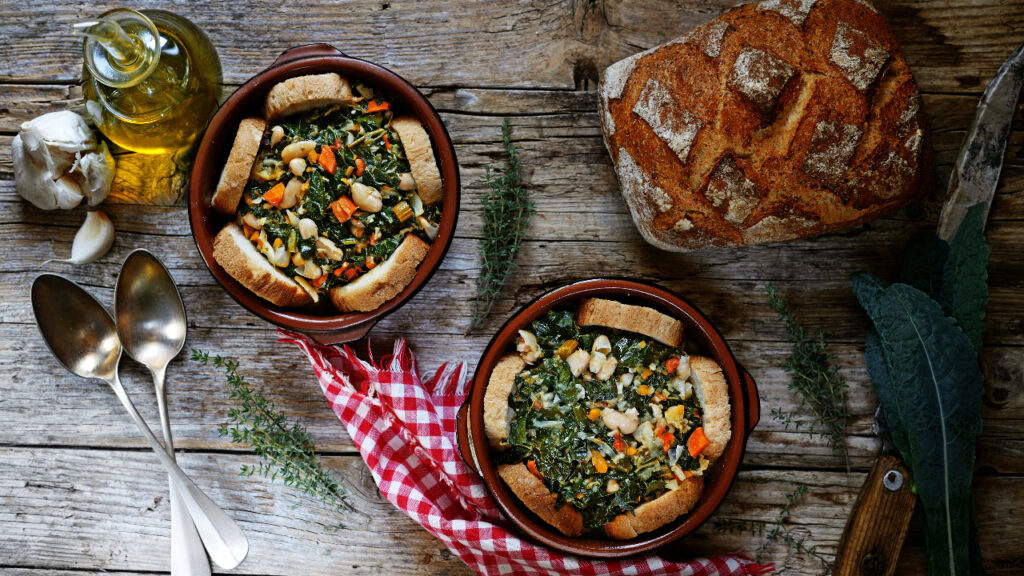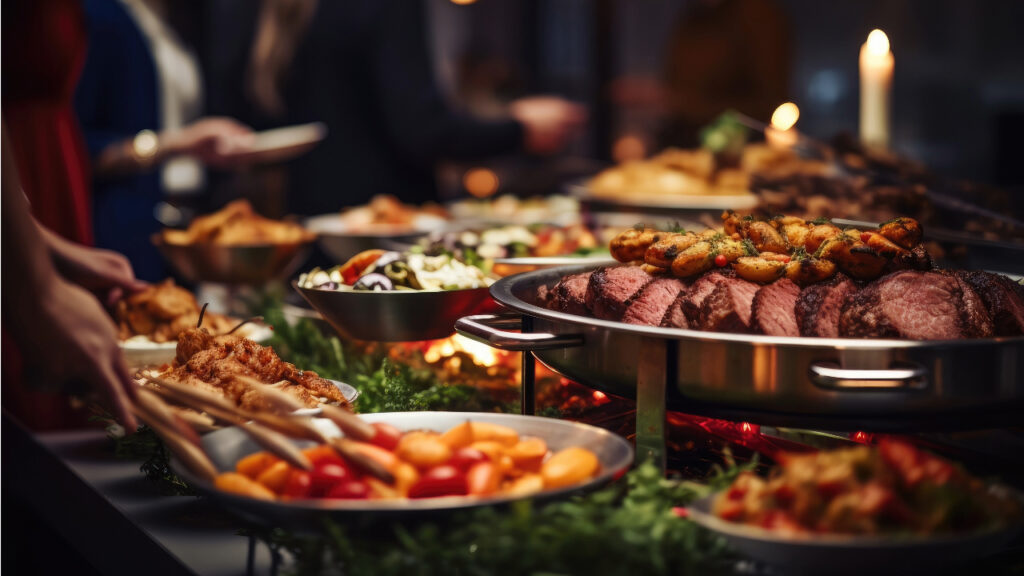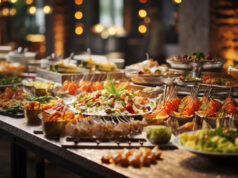Imagine standing at your wedding reception, surrounded by loved ones from various corners of Europe and beyond, each with their own unique tastes and dietary preferences. The challenge of catering for such a diverse crowd can seem daunting, but fear not! This is your opportunity to transform your European wedding into a gastronomic journey that delights every guest. From the rolling vineyards of Italy to the rustic charm of a Bavarian beer garden, your wedding menu can be a tapestry of flavours that celebrates diversity and togetherness. In this article, we’ll guide you through the essentials of crafting a wedding menu that honours the rich culinary tapestry of Europe, while ensuring every guest feels included and catered to.
▶️ Read also: Hiring a wedding planner for your European wedding, is it worth it?
Understanding your guest profile, it’s essential
When planning the catering for your European wedding, the first and perhaps most crucial step is to deeply understand the profile of your guests. This isn’t just about knowing their names and how they’re related to you, but delving into their cultural backgrounds, dietary habits, and preferences. Are a significant number of your guests coming from a specific country or region in Europe?
For instance, if a large portion of your guest list comprises individuals from the Mediterranean region, incorporating dishes that resonate with this area’s dietary preferences can be a thoughtful gesture. Additionally, it’s essential to be aware of any dietary restrictions or allergies your guests might have. This consideration not only shows thoughtfulness and care but also ensures that everyone can enjoy the celebration without worry.
To illustrate, let’s consider a couple, Maria and John, who are planning their wedding in France. Maria’s family is predominantly Italian, while John’s relatives are a mix of British and Scandinavian. Their guest list reflects this diversity. They conducted a simple yet effective survey as part of their wedding invitation, asking guests to indicate any dietary preferences or restrictions. The results showed a significant preference for Mediterranean cuisine among Maria’s family, while John’s relatives had a mix of vegetarians and guests with gluten sensitivities.
Armed with this information, Maria and John could tailor their wedding menu to not only include French cuisine but also Italian dishes that resonate with Maria’s heritage and gluten-free and vegetarian options to accommodate John’s family. This careful consideration in understanding their guest profile ensures that every guest feels included and valued, making the wedding a more memorable experience for everyone.

Dealing with dietary preferences and restrictions
In today’s diverse culinary landscape, acknowledging and catering to various dietary preferences and restrictions is not just thoughtful—it’s essential. The rise of dietary choices like veganism, vegetarianism, and gluten-free diets, along with increased awareness of food allergies and intolerances, means your wedding menu must be inclusive and accommodating.
For instance, a guest with celiac disease should have as many delicious options as someone with no dietary restrictions. This inclusivity can be achieved by offering a well-rounded menu that clearly labels ingredients, thus allowing guests to easily navigate their choices. It’s also a good idea to communicate with your caterer about cross-contamination concerns for guests with severe allergies. By providing a range of options that cater to different dietary needs, you ensure that all your guests can partake in the joyous occasion without feeling excluded or limited in their choices.
▶️ To go further: Dealing with dietary requirements at a European wedding
Consider, for example, a wedding in the picturesque vineyards of Tuscany. The couple, keen to celebrate the Italian culinary tradition, also recognizes the diverse dietary needs of their guests. Alongside classic Tuscan dishes like ribollita and osso buco, they offer a vegan ribollita (📑 here a recipe), ensuring that the rich flavors of Tuscany are accessible to guests who prefer plant-based options.
Additionally, a selection of gluten-free pasta and bread is available, ensuring that guests with gluten sensitivities can enjoy the essence of Italian cuisine without worry. By thoughtfully integrating these options into their menu, the couple not only showcases the best of Italian gastronomy but also demonstrates a deep respect for their guests’ dietary needs, making everyone feel valued and included in the celebration.

Interactive food stations: engaging and personalized dining experiences
Interactive food stations are a dynamic and engaging way to cater to the diverse tastes of your wedding guests. These stations not only serve as a culinary delight but also act as a focal point for entertainment and social interaction. By allowing guests to customize their plates, you provide a personalized experience that caters to a wide range of dietary preferences and restrictions.
For example, a make-your-own pasta station can offer a variety of sauces, toppings, and pasta types, including gluten-free options. Guests can mix and match to their liking, creating their perfect dish. Similarly, a carving station with a selection of meats, along with vegetarian and vegan alternatives, ensures that every guest finds something to their taste. These stations add a fun, interactive element to the dining experience, encouraging guests to mingle and enjoy the process of creating their meals.
Additionally, interactive stations can be a nod to the couple’s cultural background or the wedding’s theme. Imagine a wedding with a Mediterranean theme featuring a gyro and falafel station, where guests can build their own Greek or Middle Eastern-inspired wraps with a variety of fillings and sauces. For dessert, a Belgian waffle bar (📑 here a recipe) with toppings ranging from fresh fruits to decadent chocolate and creams can satisfy the sweet tooth of all ages.
Not only do these stations cater to diverse tastes, but they also offer a unique and memorable dining experience, adding to the overall charm and atmosphere of the wedding. By incorporating interactive food stations, you ensure that the catering is not just about eating but becomes an integral part of the wedding experience, reflecting the couple’s creativity and care for their guests’ enjoyment.

Beverage options: Catering to all tastes and beliefs
When planning the beverages for your European wedding, it’s important to consider the diverse tastes and religious beliefs of your guests. A well-thought-out drink menu can greatly enhance the dining experience, making it memorable for everyone. For those who consume alcohol, offering a selection of European wines, craft beers, and signature cocktails can add a touch of sophistication and regional flavour.
For instance, a wedding in Spain might feature a variety of local wines and a signature sangria, while a celebration in Belgium could showcase an assortment of famous Belgian beers. However, it’s also essential to provide a wide range of non-alcoholic options for guests who do not drink alcohol, whether due to personal preference, health reasons, or religious beliefs. Mocktails, fruit-infused waters, artisanal sodas, and fresh juices are excellent choices that can be just as festive and enjoyable as their alcoholic counterparts.
In addition to standard beverages, consider including drinks that are significant to different religious or cultural backgrounds present at your wedding. For example, offering dates and milk or non-alcoholic grape juice can be a thoughtful gesture for Muslim guests, who might appreciate these traditional offerings, especially if your wedding coincides with a significant time like Ramadan. Similarly, providing kosher wines at a wedding with Jewish guests can be a mark of respect for their dietary laws.
Remember, the key to a successful beverage menu at a European wedding is inclusivity and sensitivity to the diverse backgrounds and beliefs of your guests. By offering a wide range of beverage options, you not only ensure that everyone’s preferences are catered to but also demonstrate a considerate and welcoming approach to hosting your special day.
Catering for a diverse crowd at a European wedding requires thoughtful planning and a keen understanding of your guests’ preferences. By incorporating a mix of local, traditional, and dietary-conscious options, you can create a memorable dining experience that celebrates both your heritage and the inclusivity of your special day.






